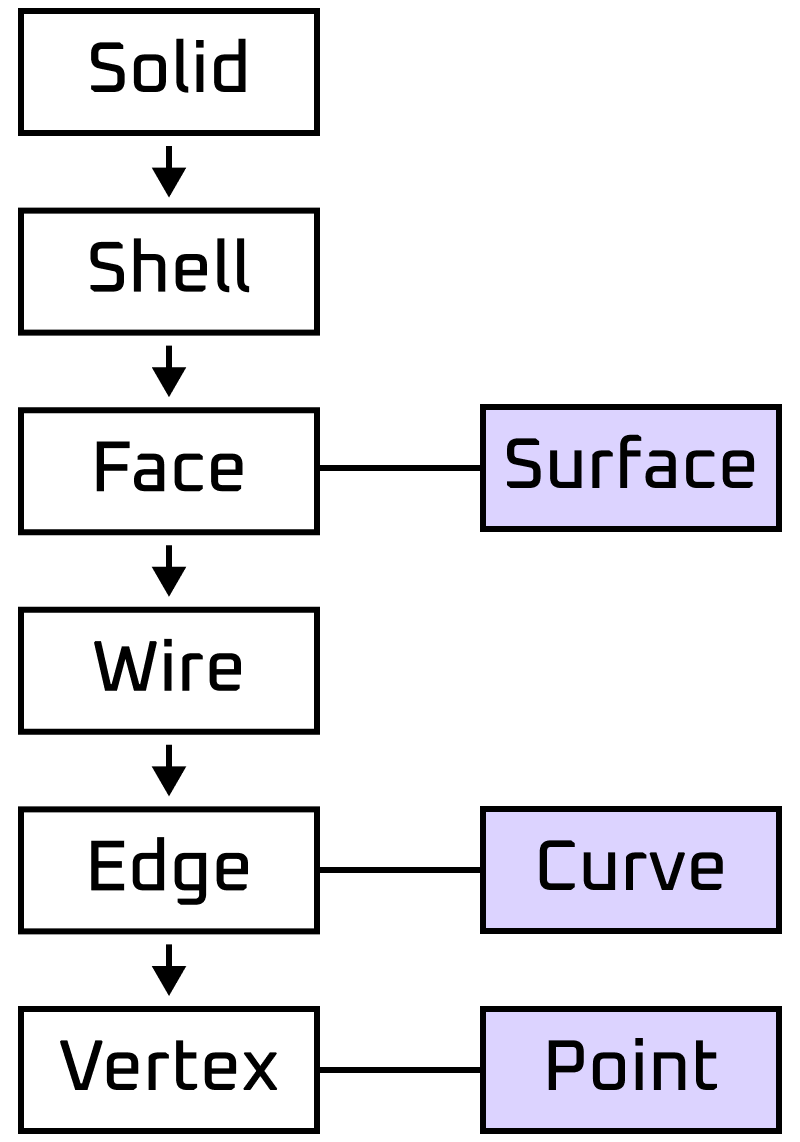Representations are associated with a ModelData.Part and define its shape.
The following representations are supported:
Each part may contain one or more bodies of different types (B-Rep or Mesh).
B-Rep includes a topological model that describes hierarchy and connectivity information between elements in a 3D model (from vertices to a solid), as well as the underlying geometry entities (points, curves and surfaces):

Topological entities inherit the base class ModelData.Shape , curves inherit the class Geom.Curve and surfaces inherit from the base class Geom.Surface .
Manufacturing Toolkit supports the next types of bodies: ModelData.SolidBody , ModelData.SheetBody and ModelData.WireframeBody . These bodies form the B-Rep representation of a part.

Supported geometries include:
Each topological entity can be explored for its children. Vertices, edges and faces provide access to associated geometries.
Curves and surfaces give access to their defining parameters (e.g. axis for a circle, or control points for a NURBS curve):
Mesh describes a 3D shape as a set of flat polygonal facets. Such meshes are commonly used for visualization and approximate geometry analysis.
In MTK, polygonal geometry is represented by ModelData.MeshBody , which holds one or more ModelData.MeshShape elements.